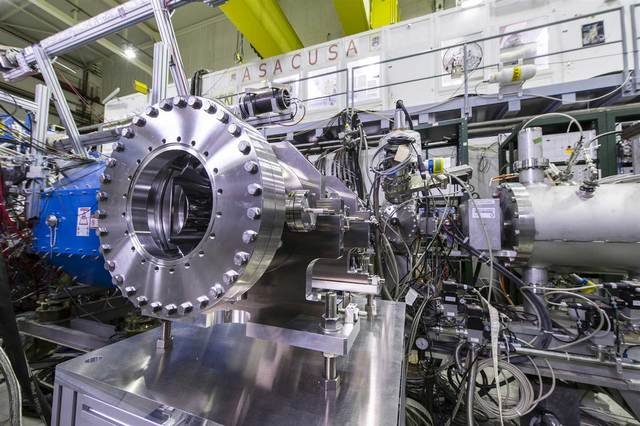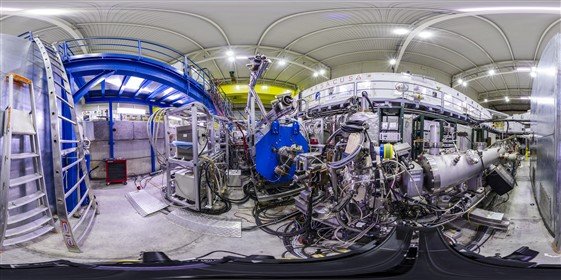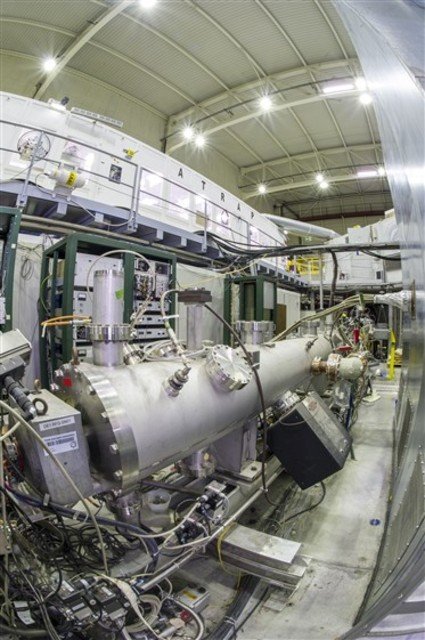The ASACUSA experiment at CERN has published yesterday fresh results on the properties of the antiprotons, which are antimatter particles, or antiparticles. Just to flash a few nice words, these antiproton beasts are also known as antihydrogen nuclei.
This tests to an unprecedented level of accuracy the CPT (charge-parity-time reversal) symmetry, one of the most fundamental symmetry believed to be realised in nature.
The original article can be found here, but one needs university credential to access it. I agree that publishing in Science is cool, but free journals are better! Anyhow, this is not the topic.
THE AIMS OF THE ASACUSA EXPERIMENT

[image credits: CERN]
Particle physicists like acronyms and ASACUSA is just one of these. It stands for Atomic Spectroscopy And Collisions Using Slow Antiprotons. The ASACUSA experiment is one of the numerous (non LHC) experiments based at CERN and is represented in the few pictures I show in this post.
The goal of this experiment is to study antimatter properties and test one of the fundamental symmetry of nature, the symmetry between matter and antimatter also known as the CPT symmetry (just for the fun of using big words).
Matter and antimatter particles of a given type are similar, but have an opposite electric charge (to make a long story short). For instance, electrons and positrons have the same mass, but an opposite electric charge of -1 and +1 respectively, in a unit system where the proton charge equals 1.
ASACUSA aims for precisely measuring the antiproton properties and to compare them to the proton properties to test the validity of the CPT symmetry. The first key property to be tested is nothing but the difference between the antiproton and the proton masses.
A proton and an antiproton have indeed the same mass, as predicted by the CPT symmetry, but they have opposite electric charges of +1 and -1 respectively.
PRODUCING MIXED MATTER-ANTIMATTER HYBRID ATOMS

[image credits: CERN]
The idea behind the new measurement of ASACUSA is pretty simple an can be summarised in a couple of words:
- antiprotonic helium;
- spectroscopy.
I will first focus on the first keyword and then move in the last part of this post with the second one.
Helium nuclei have a very simple structure made of two protons and two neutrons. Helium atoms are composite objects made of one helium nucleus around which two electrons are orbiting. An antiprotonic helium is an helium atom where one of the two electrons has been replaced by an antiproton.
Antiprotons and electrons are two particles with an electric charge of -1, but the antiproton is way more massive. One of the results of ASACUSA has been to measure this ratio to an impressive precision and to compare it to the proton mass over electron mass ratio.
Antiprotonic helium atoms are thus hybrid matter/antimatter atoms. They can be formed by sending an antiproton beam through a gas of helium. Getting the necessary antiproton beam (or a beam containing the simplest antiatom) is really nothing special. CERN contains an entire facility whose only aim is to deliver antiprotons to various experiments.

[image credits: CERN]
Once antiprotons are injected into the helium gas, most of the antiparticles will annihilate very quickly. The reason is very simple: when an antiparticle meets the corresponding particle, they both annihilate. And an helium gas is just full of protons that are just waiting for interacting with their antiproton counterparts.
A small fraction (3%) of the injected antiprotons will however not annihilate, and form instead antiprotonic helium atoms. If we provide a huge number of antiprotons, the tiny fraction of produced antiprotonic helium atoms turns out to be a substantial number. To quote this number, we are talking about 2 billion antiprotonic helium atoms collected during five years.
COOLING DOWN MATTER/ANTIMATTER HYBRID ATOMS
Once produced, those hybrid matter/antimatter atoms are cooled down to a temperature colder than in space of about 1.5 K (that consists of -271 Celsius degrees). This is a crucial aspect of the ASACUSA experiment. With such a low temperature, the vibrations of the helium nucleus are very slow and under control.
The properties of the antiprotons can consequently be measured with an unprecedented precision since the nucleus motion is not disturbing the measurements. This contrasts with all previous results for which the nucleus motions were the blocking point, preventing us to get precision.
In passing, one of the major breakthrough of the ASACUSA experiment is the cooling technique that has been employed. A refrigerated gas made of standard helium atoms has been used to cool down the antiprotonic helium atoms.
THE MEASUREMENTS AND THE RESULTS
Now that we have cold antiprotonic helium atoms, we can start measuring their properties, and in particular the antiproton mass, with very high precision. To this aim, spectroscopy has been used. Here is my second keyword mentioned above.
The idea behind the measurement is pretty simple: thanks to a laser beam, an antiprotonic helium atom is excited so that the antiproton moves towards a higher energy level. This is nothing else than an atomic transition, by the way.
And to have this transition occurring, the frequency of the laser has to be precisely tuned so that the transition can occur. This is quantum mechanics: energy is quantised and only well defined discrete values can lead to atomic transitions.
From the measurement of the frequency of the laser beam, the ratio of the antiproton mass to the electron mass can be extracted thanks to a comparison with quantum electrodynamics (usually abbreviated as QED) calculations.
This ratio and it has been found to be 1836.1526734, omitting all digits affected by the remaining experimental errors.
This measurement agrees with the ratio of the proton mass to the electron mass at the 0.0000000008 level, so that the fundamental CPT symmetry seems to be so far still conserved. Theory is saved!
SOURCES
The CERN press release connected to the above story;
The Science article can be downloaded form here. (credentials needed).
For any question on this post, or remark/comment/suggestion about anything, do not hesitate to visit the comment section below, or pass by the #steemSTEM channel on the Steemit chat.
